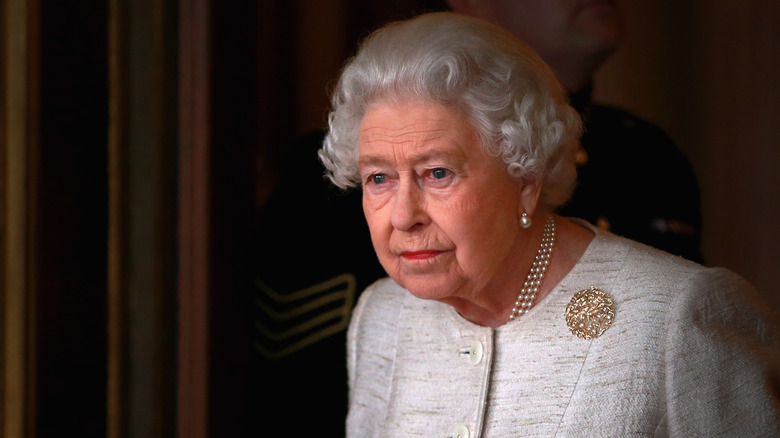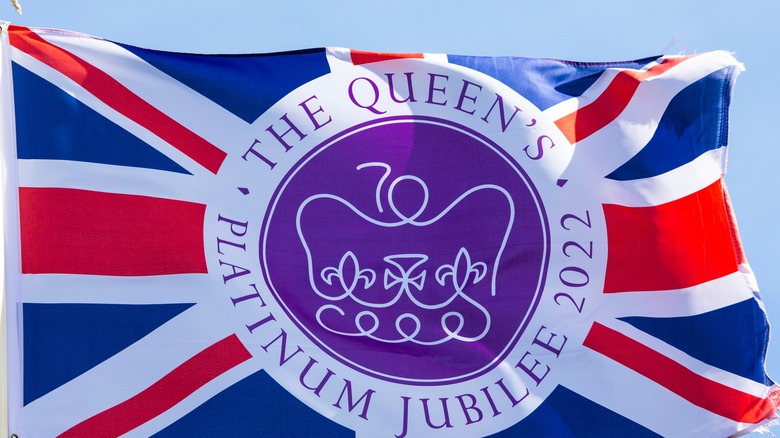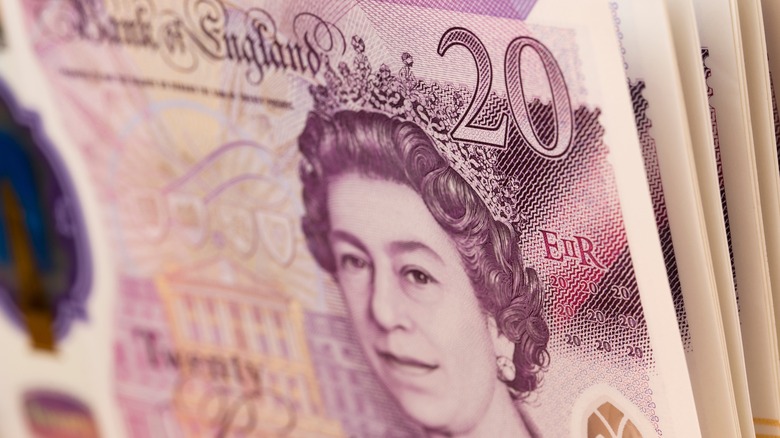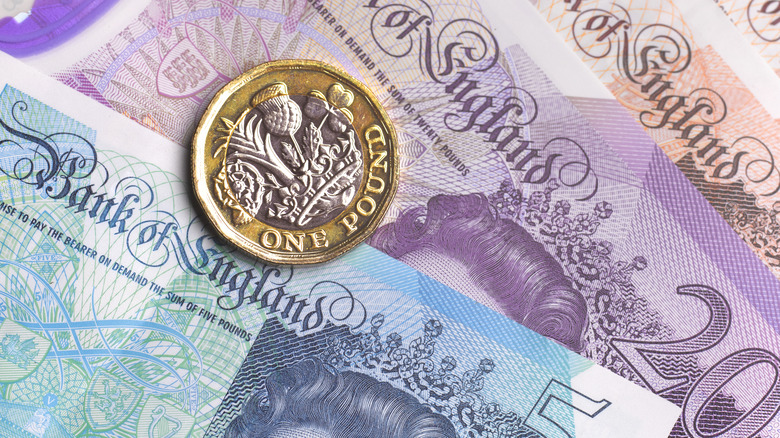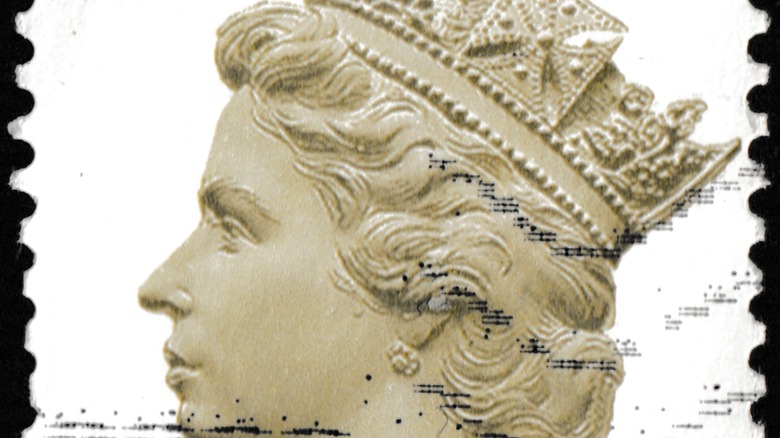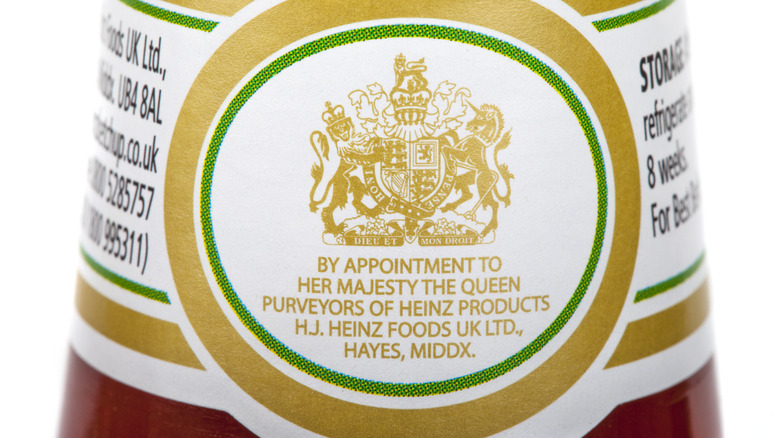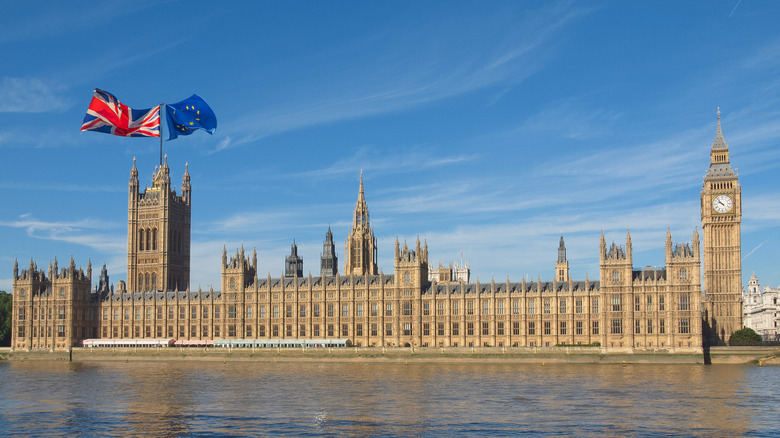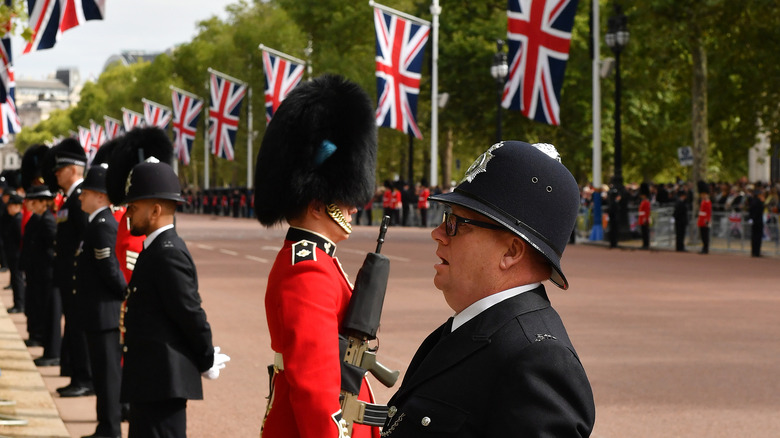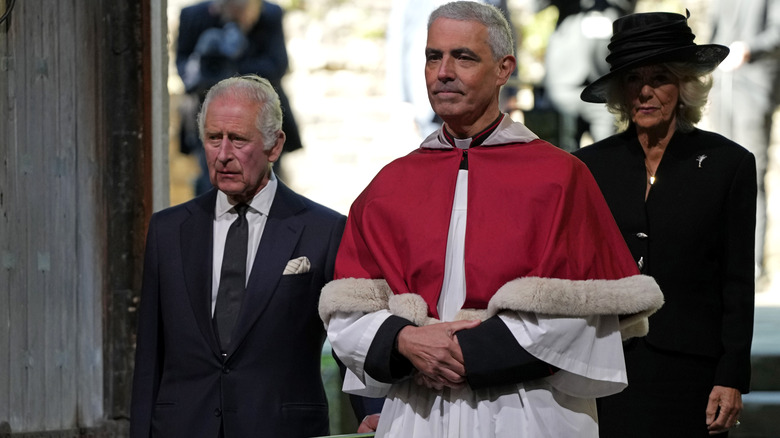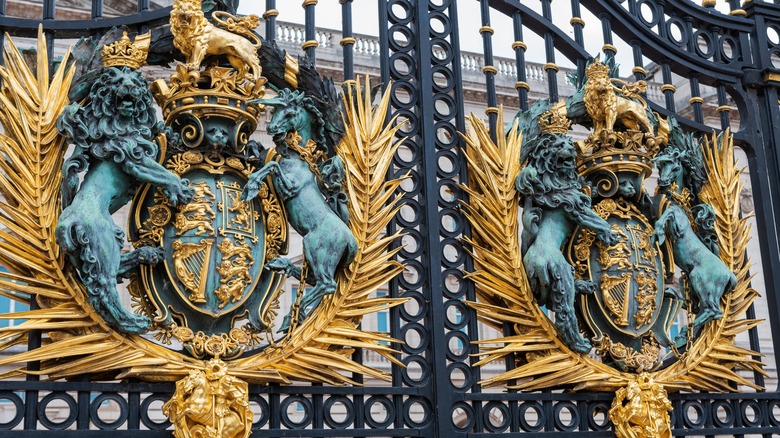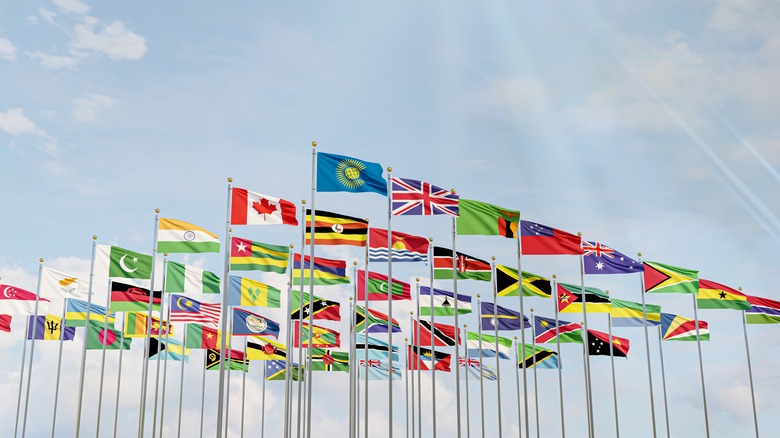Everything That Will Happen Now That The Queen's Funeral Is Over
The passing of Queen Elizabeth II sent a great deal of the world into collective grief. The longest-reigning monarch of the United Kingdom passed away peacefully on September 8, 2022. Immediately following was a 10-day national mourning, in which supporters and loyal subjects of the crown slowed their days to reflect on Her Majesty's decades-long reign. Thousands queued outside of the Houses of Parliament to pay their final respects before she was taken in a royal procession to Windsor Castle, where she will rest with her husband, Prince Philip.
The last time the United Kingdom grappled with the loss of a monarch was in 1952 with the passing of Elizabeth's father, George VI. Though many do recall the ensuing months of change that occurred during that time, there are just as many — perhaps more — who have not yet lived long enough to witness the change that comes with the death of a monarch. Below, we'll share some of the more prominent changes that are set to occur now that Queen Elizabeth II has died.
Flags will be changed
Flags across the country used in police stations and naval ships with generals present have long borne the symbol "EIIR" (Elizabeth Regina II) with specific colors and embodiment to signify loyalty to the queen, per The Guardian. Additionally, military regiments fly similar flags that display her initials and golden colors. Countries where she is recognized as head of state (which include Australia, Canada, and New Zealand) also have their own flag designed specifically for when Queen Elizabeth would visit. With the incoming king, these flags will now change to represent his colors and initials.
Additionally, it's quite possible that the flag flown in Buckingham Palace to signify when the reigning monarch was in-house may change. Currently, the flag is designed with four symbols — a lion to represent Scotland, a hand for Northern Ireland, and two sets of three lions to represent England. At the time of the flag's design, Wales had not yet had its own national flag. There is now speculation that the flag will be re-designed to include Wales.
Bank notes will be redesigned
In 1960, banknote designer Robert Austin created printed currency and coins to showcase the queen's face as a watermark. At this moment, there are more than four billion banknotes in circulation with her portrait, according to The New York Times. Buckingham Palace will soon design a new watermark to showcase King Charles III on banknotes; however, this is no simple job, and it will ultimately be approved or denied by the new king.
Because of the amount of money currently in circulation, it may take two to four years to reprint more for the new king. Mauro F. Guillén, the dean at Cambridge Judge Business School, noted that the cost of this turnaround will be "relatively negligible." Once the banknote design is approved, production will begin. The king's portrait will face the opposite side of the queen, in keeping with the tradition of alternating directions with each new monarch.
Some coins will skyrocket in value
In addition to the U.K., Queen Elizabeth's image is also featured on bills and coins in Canada, Australia, New Zealand, Eastern Caribbean central banks, and other parts of the Commonwealth of Nations. With 29 billon coins in circulation per the Royal Mint, the process of updating those will take longer than banknotes, as coins are more durable and long-lasting. Furthermore, it's not entirely uncommon for previous monarchs to remain on coins.
One shouldn't be too quick to turn in all of their coins. According to Australian coin expert Joel Kandiah, there are two particular Australian coins that have now skyrocketed in value due to the queen's passing: the 2012 Red Poppy coin and the 2013 Purple Coronation coin, per News.com. Although both of them are marked as $2 coins, they carry a combined worth of up to $550 as of this writing. Kandiah warns owners of either of these coins to not polish them before attempting to sell them, as that may reduce their value.
Stamps will become collectors' items
While there is not yet an official announcement of change from the Royal Mail Group, stamps with the new king's portrait will soon be designed, produced, and put into circulation. All current stamps bearing the queen's face will still be valid during this time of transition. At the same time, stamps are already undergoing a makeover, with barcodes now being added as an additional layer of security.
The New York Times notes that stamps without the barcode that still feature the queen's portrait will become ineffective starting next year. Lancaster University media lecturer Laura Clancy notes "all of a sudden, I suppose, just the everyday stamp has become a collector's item, and that's quite interesting. It changes the meaning of the object, right? From an everyday object to something that is more special."
What won't change in terms of carrier service, however, are the public post boxes carrying the queen's cypher "EIIR." This follows the tradition established with the passing of King George VI, as there are still public post boxes carrying his cypher more than 70 years later. While there will be new post boxes in production with the new king's initials, there are currently no announced plans.
Product labels will need to be updated
A great many businesses are currently under contract with the royal family to carry the current monarch's coat of arms on their products, which may only be allowed if services have been provided to the family for five of the last seven years. More than 600 warrants have been approved by the queen, including more than 800 longstanding businesses, such as Heinz, Command Pest Control, and Swarovski, according to The Royal Warrant Holder's Association.
These brands will still be able to carry Queen Elizabeth's symbol for the next two years. However, once that contract is up, brands and products must update the labels that are currently in circulation. Mauro F. Guillén, dean at Cambridge Judge Business School, noted to The New York Times that this shouldn't be a very costly project. "We're not talking about changing the ketchup. We're talking about changing a very, very small, tiny part of the packaging," he said.
Oaths of allegiance will be modified
"I (name) swear by almighty God that I will be faithful and bear true allegiance to Her Majesty Queen Elizabeth, her heirs and successors, according to law. So help me God," is the current oath of allegiance for incoming members of Parliament. Without swearing this fealty to the crown, members aren't allowed to vote, debate, or receive a salary, per The Guardian. The wording of the pledge will now change as the nation welcomes a new king.
Other renditions of allegiance include swearing to "bear true allegiance to Her Majesty Queen Elizabeth the second, her heirs and successors," which is the pledge spoken for new British citizens. The wording on this will now change to reflect the new monarch. Additionally, the Cub Scouts will now modify their pledge from "do my duty to the queen" to "do my duty to the king." For armed forces, the oath to "be faithful and bear true allegiance to Her Majesty Queen Elizabeth II, her heirs and successors" will also be modified, via The Guardian.
The National Anthem lyrics will change
The current lyrics of Britain's national anthem include the wording "God save our gracious queen." This will now be modified back to "God save our gracious king," which hasn't been used in over 70 years since her father's rule, per the Royal website.
The song was first publicly performed in 1745. The official words and tune have no specific origin, though the royal website speculates it dates back to the 17th century. It was later adopted to officially hold the title as Britain's national anthem under the rule of George II back in the 18th century. "The words used today are those sung in 1745, substituting 'queen' for 'king' where appropriate. On official occasions, only the first verse is usually sung," notes the Royal website regarding this change.
This change in lyrics is currently in effect wherever the national anthem is played publicly. The current ruling regarding the modification of the national anthem can be seen on the Royal website.
Prayers will be modified
The Church of England's Book of Common Prayer contains a few prayers dedicated to the queen. Verses in this book include prayers to "replenish her with the grace of thy Holy Spirit, that she may always incline to thy will, and walk in thy way." Prayers such as this will now be modified to reflect the king's new ruling. Officially, this change must be done either through legislation or through a royal warrant, per The Guardian.
Unofficially, church priests do have the authority to modify their spoken prayers to fit the new monarch. These prayers are typically spoken during weekly Sunday services, which means this change may have already taken place within churches. Other verses include holy communion to collect prayers to "rule the heart of thy chosen servant Elizabeth, our queen and governor, that she may above all things seek thy honour and glory." The modification may be done through the General Synod of the church, per The Guardian.
The royal coat of arms may change
It's been speculated that the royal coat of arms, which can be seen on some of the monarch flags as well as stationed outside of government buildings, will undergo some changes now that there's a new monarch, per Reuters. The current royal arms depict a lion and a unicorn against a shield. The tension between the two animals is supposedly symbolic of the strained relationship between the throne of England and Scotland, per National Trust, with the lion representing England and the unicorn representing Scotland. This symbolism dates back to 1603, when King James I, already king of Scotland, ascended the throne of England. This symbol would later be associated with the king's divine right to rule.
The speculated change would include a symbol for Wales, as there currently isn't one on the current coat of arms. If the king decides to go forth with modification, it may be costly, as the current symbol is in use nationwide.
Commonwealth constitutions and laws will be redrafted
Fourteen countries outside of Britain currently recognize Queen Elizabeth as their head of state. Many changes will occur to reference the new monarch in constitutions. Because some of these countries hold generally opposite political views as the monarch, it is speculated by commonwealth experts that this change may bring about some political tension, specifically in countries such as Jamaica and Belize, per The Guardian. With Barbados having just recently become a republic in 2021, the change in monarch may inspire other countries to gravitate toward a republic.
Additionally, the queen's name is featured in many of the commonwealth laws written, which will now need to be redrafted for the new monarch. While these redrafts are waiting to be written, many commonwealth nations such as Grenada, the Bahamas, and Saint Kitts and Nevis may question whether or not the monarch should have rule over lawfully appointing their governor generals, via The Guardian.
